1
This section allows you to view all posts made by this member. Note that you can only see posts made in areas you currently have access to.
Pages: 1
2
Promenade / Re: Introduction
« on: November 22, 2019, 08:05:19 AM »3
Health / Pirate Medicine
« on: November 21, 2019, 08:42:54 PM »By Cindy Vallar
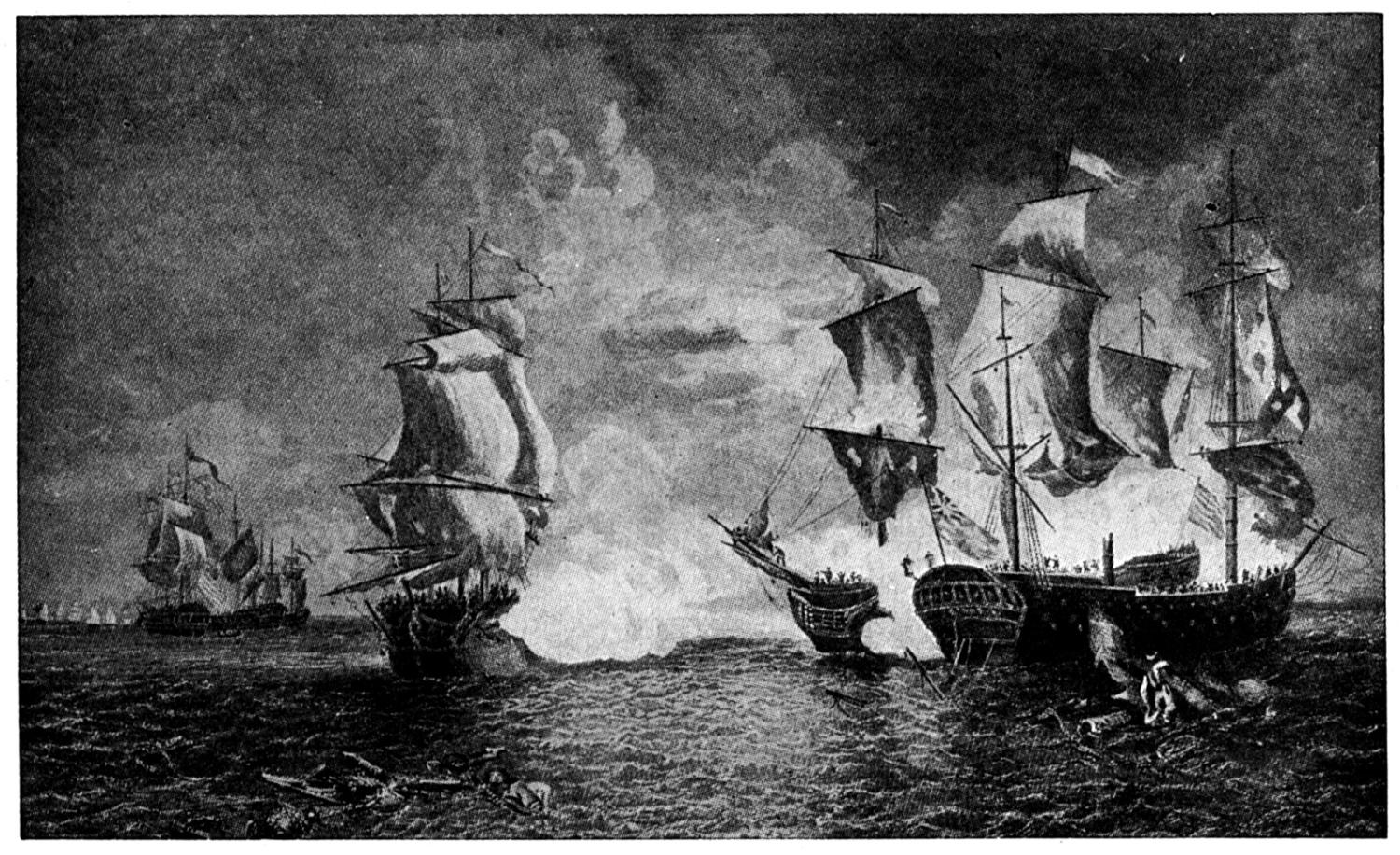
In 1720 Bartholomew Roberts and the pirates who sailed with him found themselves in a heated battle with pirate hunters. His only option was to “cut and run,” so the pirates dumped their guns and cargo overboard. They eventually escaped, but not without severe damage to the
This is but one account of how sailors fared without a doctor to tend them. If the ship possessed a
Surgeons who plied their trade at sea, rather than on land, were not new. They sailed with Roman warships, and during medieval times, they accompanied nobility and prelates on their voyages. When the Spanish Armada sailed in 1588, the eighty-five surgeons and their assistants were unable to stop the
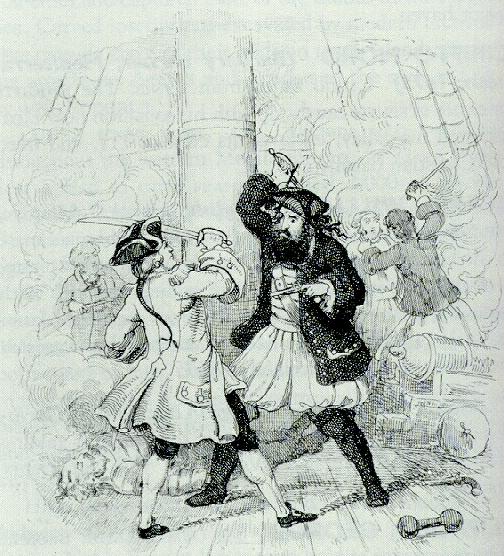
John Woodall’s
Unlike today, medicines of the past had to be put together similar to how a cook bakes a cake. The recipe for a medication consisted of a curative agent, water or oil, flavoring, and the compound used to comprise how the medication was given, for example as a pill or an ointment. The base for the latter might have been glycerin or lard. Wax sometimes held a pill together. Ingredients in ointments and liniments might include mercury, turpentine,
Perhaps Blackbeard required the medicines and instruments to treat syphilis, a common plague among sailors and pirates who frequented brothels when on shore. Of course, his crew might also have suffered from any number of other problems, for danger lurked almost everywhere aboard a wooden ship. Aside from the rats, weevils, lice, and cockroaches, livestock was kept aboard and sometimes had free reign of the deck, making for unsanitary conditions. The pirates’ clothing was often wet or damp. Depending on where they sailed, nature might also inflict hardships: sunburn, heat exhaustion, sun stroke, hypothermia, exposure, or frostbite. Their work was equally hazardous and sores, cuts, and bruises were the norm. Scurrying up or down the rigging and the frequent movement of both the ship and the mast sometimes caused sailors to lose their footing and fall. Landing in the water often meant the man drowned, for knowing how to swim wasn’t a requirement for being either a sailor or a pirate. If he was lucky enough to be retrieved from the water, sailors held the victim by his heels and shook him to remove any water in his chest.
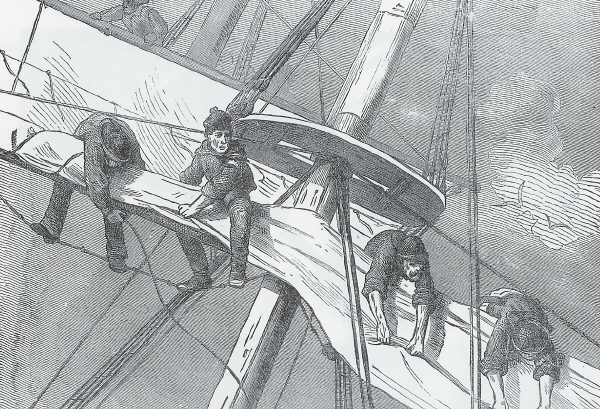
Landing on the deck might fracture a person’s skull or kill him. In 1833 Billy Bridle
Pirates, who visited lands not explored before, also encountered additional dangers.
The gnats of the third species exceed not the bigness of a grain of mustard. The colour is red. These sting not at all, but do bite so sharply upon the flesh as to create little ulcers therein. When it often comes that the face swells and is rendered hideous to the view, through this inconvenience.(Esquemeling, 33)
The plants could be equally dangerous. He encountered a dwarf apple tree near the shore. Although similar to apples back home, the fruit was poisonous.
…these apples being eaten by any person, he instantly changes colour, and such an huge thirst seizes him as all the water of the Thames cannot extinguish, he dying raving mad within a little while after…. This tree affords also a liquor, both thick and white…which, if touched by the hand, raises blisters upon the skin, and these are so red in colour as if it had been deeply scalded with hot water. One day being hugely tormented with mosquitos…and as yet unacquainted with the nature of this tree, I cut a branch thereof, to serve me instead of a fan, but all my face swelled the next day and filled with blisters, as if it were burnt to such a degree that I was blind for three days.(Esquemeling, 32)
Depending on a pirate’s ailment, the surgeon might prescribe one of nine different types of medicines. Aquae – such as cinnamon water, licorice juice, and fortified peppermint water – cured hiccups and “stoppeth vomiting, cureth choler, griping paine of the belly…” according to John Woodall. (Druett, 7) Spirits, salts, and tinctures – like salts of wormwood, vinegar, and
 It was also used to make the varnish used on violins. Around 1640 Jesuit priests introduced Peruvian bark (quinine) to Europe from South America. It was used to cure intermittent fevers, such as
It was also used to make the varnish used on violins. Around 1640 Jesuit priests introduced Peruvian bark (quinine) to Europe from South America. It was used to cure intermittent fevers, such as It should be taken in the intermissions between
the hot stages, in the dose of a grain every hour, an
emetic at the commencement of the chill, and a purge of
Calomel and Jalap afterwards having been given before
commencing with the quinine.(Druett, Rough
Medicine, 61)
Syrups were made from almonds, red roses, saffron, lemons, and other plants. On board a ship, the surgeon might mix vinegar of squills (hyacinth) with sugar and honey, before giving it to a pirate to clear mucus from his bronchial tubes. Oleum or oils, like oil of
 , all of which a pirate might encounter when visiting exotic places. Unguents were used to treat burns and abrasions.
, all of which a pirate might encounter when visiting exotic places. Unguents were used to treat burns and abrasions.Plasters drew bad humors from the body or to treat open infections, such as wounds received in battle. In 1500
The
last type of medicine came from herbs and roots. Chamomile
flowers soothed headaches and helped with kidney problems.
Other examples included wormwood,
berries, sarsaparilla root, mustard seeds, and ginger.
The most common type of ailment that surgeons treated was a disease of some kind. To men like John Woodall, sin was the primary cause of disease, although the noxious fumes emanating from bilge water ran a close second. Aside from living a moral life – not something usually associated with pirates – the best way to stay healthy was to avoid stinking vapors and cemeteries whenever possible, and protect oneself from the night air. Diseases, however, had a nasty habit of invading ships where large numbers of people were gathered together in confined places. Surgeons recognized this fact early in the fifteenth century. It was one reason that Sir Francis Drake had to curtail some of his expeditions against the Spaniards in the West Indies. He wrote in his journal:
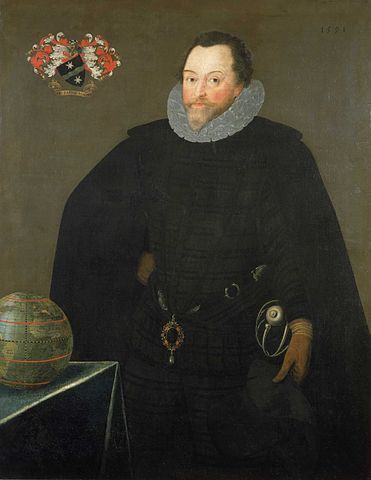
…we were not many dayes at Sea but there began amongst our people such mortality, as in a few dayes there were dead above two or three hundred men. And until some, seven or eight dayes after our coming from Saint Jago, there had not dyed any one man of sicknesse in all the Fleet: the sicknesse shewed not his infection, wherewith so many were stroken until we were departed thence, and there seazed our people with extreeme hot burning and continuall ague, whereof some very few escaped with life and yet those for the most part not without great alteration and decay of their wits and strength for a long time after. In some that dyed were plainly shewn the small spots, which are often found upon those that be infective with Plague.(Friedenberg, 16)
The actual disease Drake described remains unknown, but it might have been typhus,
Among the artifacts recovered from the wrecks of Black Sam Bellamy’s
What did a pirate endure if he contracted syphilis? The disease has three stages.
Chancres form where contact with an infected person occurred. These often heal, leaving small scars.
Six to eight weeks later, the pirate seemed to contract the flu and developed a skin rash. Doctors often misdiagnosed this stage because of its resemblance to small pox and measles. The patient soon recovered and believed himself cured. During this stage, syphilis was contagious, and the pirate often infected many others. After two years, the disease entered a dormant stage.
The final stage occurred when syphilis attacked the body’s systems many years later. Many went mad or blind before they died.
An early treatment
Since syphilis was more or less an occupational hazard, surgeons treated most pirates over a long period of time. Whether the mercury was ingested orally or absorbed through unguents, it often produced a metallic taste in his mouth that caused patients to salivate. They didn’t complain overmuch since many thought it was just the price they paid for contracting the disease in the first place. Mercury poisoning, however, sometimes occurred. When this happened, the pirate lost weight, drooled, had foul breath and blurred vision, and slurred his speech. He also had trouble maintaining his balance. If the treatment for syphilis wasn’t stopped, his kidneys eventually ceased functioning and he died.
Another disease that plagued anyone who remained at sea for long periods of time was
Their gums were rotten even to the very roots of their teeth, and their cheeks hard and swollen, the teeth were loose neere ready to fallout…their breath a filthy savour. The legs were feeble and so weak, that they were not scarce able to carrie their bodies. Moreover they were full of aches and paines, with many bluish and reddish staines or spots, some broad and some small like flea-biting.(Brown, 34)
Just like the pirates and sailors, those who treated them sometimes endured the same disease. Another surgeon who sailed on an English ship in the sixteenth century wrote:
It rotted all my gums, which gave out a black and putrid blood. My thighs and lower legs were black and gangrenous, and I was forced to use my knife each day to cut into the flesh in order to release this black and foul blood. I also used my knife on my gums, which were livid and growing over my teeth…. ; When I had cut away this dead flesh and caused much black blood to flow, I rinsed my mouth and teeth with my urine, rubbing them very hard…. And the unfortunate thing was that I could not eat, desiring more to swallow than to chew…. Many of our people died of it every day, and we saw bodies thrown into the sea constantly, three or four at a time. For the most part they died without aid given them, expiring behind some case or chest, their eyes and the soles of their feet gnawed away by the rats.(Brown, 34)
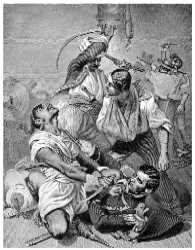
While pirates preferred not to engage in a sea battle, fighting did occur. Sometimes it was confined to the actual boarding of the prize, but sometimes the hunter and prey exchanged volleys from their guns. The injuries inflicted were bloody and sometimes lethal. After the American frigate
The first object I met was a man bearing a limb, which had just been detached from some suffering wretch…. The surgeon and his mate were smeared with blood from head to foote: they looked more like butchers than doctors….Our carpenter…had his leg cut off. I helped to carry him to the after wardroom, but he soon breathed out his last life there, and then I assisted in throwing his mangled remains overboard…. It was with exceeding difficulty I moved…it was so covered with mangled men and so slippery with blood….(Estes, 65)
James Lowry served as a Royal Navy ship’s surgeon in the Mediterranean fleet when it attacked Fort Saint Elmo on Malta in December 1798. His words clearly give witness to the dangers during a sea battle, and to the fact that during a fight, there was no time to mourn the dead.
As I was dressing a wounded man, a cannon ball struck a young gentleman on the head dashing his brains upon all sides; part of them blinded me. At this moment a splinter struck my head and rendered me insensible for quarter of an hour. Upon my recovery, I could hardly persuade myself but what I was mortally wounded, from being completely besmeared with blood and brains. Alas! when I beheld my friend and companion without a head, I could not avoid reflecting with emotions of grief; but the field of battle being no place for weeping or lamentations…I contented myself with the usual expression upon the field of battle – poor fellow, there he lies and ends his career. (Lowry, 44)
When a pirate lay hurt, he usually suffered from a puncture, a slash, or an amputation. Bullets, shrapnel, and splinters often caused the first type of wound, whereas a cutlass or knife caused the second.
A wounded pirate eventually found himself placed upon planks laid across casks to form a makeshift operating table, if a real table wasn’t available. An old sail or other cloth might be draped over the planks. Nearby smaller flat surfaces or sea chests held the surgeon’s
Drake, like the buccaneers who came later, often raided land targets. During one such raid, the party was ambushed and he was wounded.
The generall himself was shot in the face under his right eye and close by his nose, the arrow piercing a marvelous way in underbasis cerebris with no small danger of his life besides that, he was grievously wounded in the head. The rest being nine persons in the boat, were deadly wounded in divers parts of their bodies, if God almost miraculously had not give cure to the same. For our chief Surgeon being dead and the others absent by the loss of our vice-admirall, and having none left us but a boy, whose good will was more than any skil he had, we were little better than altogether destitute of such cunning and helps as so grievous a state of so many wounded bodies did require. Notwith standing God, by the very good advice of our Generall and the diligent putting too of every man’s help, did give such speedy and wonderful cures, that we had all great comfort thereby and yielded God the glory, whereof.(Friedenberg, 17)
Doctors didn’t know what caused infection back then, so instruments weren’t sterilized and bandages weren’t necessarily clean. Neither did the surgeon wash his hands between patients. To tend a puncture or slash wound, he removed “unnatural things forced into the wound” (a musket ball, pieces of wood or cloth), using a forceps. (Friedenberg, 11) Then he washed the wound with water or alcohol, packed it with lint scraped from linen sheets, and wrapped a bandage around it. If sutures were needed, he used waxed thread that might dangle from his lips until needed. Should infection set in, the preferred treatment was to bleed the patient.
A pirate who suffered a severe wound to his arm or leg, though, was more likely to have it amputated since the tissue and muscle were severely damaged. The last thing anyone wanted was to have the wound turn gangrenous, for that usually resulted in death. Most doctors believed the patient was more likely to survive if a clean cut was made, than if the surgeon allowed the limb to heal without surgery. John Hoxse, a carpenter aboard the
…as I was standing near the pump, with a top maul in my right hand, with the arm extended, a shot from the enemy’s ship entered the port near by, and took the arm off just above the elbow, leaving it hanging by my side by a small piece of skin; also wounding me severely in the side, leaving my entrails all bare. I then took my arm in my left hand, and went below…and requested the surgeon to stop [the bleeding in] my arm [as it] was already off. He accordingly stopped the effusion of blood, and I was laid aside among the dead and wounded, until my turn came to have my wounds dressed…. I was so exhausted that I fell asleep…until…I was…laid on a table, my wounds washed clean, and my arm amputated and thrown overboard.(Langley, 58)
Hoxse received these wounds during the Quasi-War with France, but didn’t record the event until forty years later.
When
We held [one man] while the surgeon cut off his leg above the knee. The task was most painful to behold, the surgeon using his knife and saw on human flesh and bones as freely as the butcher at the shambles.(Estes, 65)
An injured pirate’s clothing was cut off and a tourniquet was applied to slow the bleeding. The surgeon gave him a stick to bite down on, and while the ship pitched and rolled, the operation began. First, the surgeon used a scalpel to cut open the skin above the wound. He sliced through the muscle to the bone with a knife. The mate who assisted pulled back the flesh to expose the bone and a leather strap encircled the bone to keep it clear of obstruction. Using a saw, the surgeon then cut the bone and tossed the removed limb into the bucket.
A strip of cotton cloth about 2 feet long and 8 inches wide torn up the centre from one end for half the length is then to be drawn over the flesh closed around the bone. The ends are brought together and the whole serves to draw the skin and flesh up while the bone is sawed off. Very little pain is felt from sawing a bone – If there is any splinter or corner left it should be pinched off with nippers.3
Hot tar was painted on the bloody stump or the wound was cauterized with a hot iron.
Contrary to what most people believe, the injured underwent surgery wide awake. They weren’t given rum or other alcoholic drinks to numb them for two reasons. Anesthetics had yet to be invented and the doctors didn’t want their patients dying from weak hearts. Opiates or grog weren’t given to them until after the operation to relieve pain.
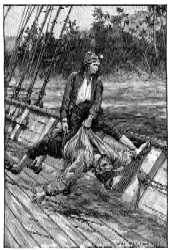
Sometimes there was nothing a surgeon could do to help a wounded man. When this happened, he often died a slow and painful death. Robert Young, the surgeon aboard the Ardent at the
Joseph Bonheur had his right thigh taken off by a cannon shot close to the pelvis, so that it was impossible to apply a tourniquet; his right arm was also shot to pieces. The stump of the thigh, which was very fleshy, presented a dreadful and large surface of mangled flesh. In this state he lived near two hours, perfectly sensible and incessantly called out in a strong voice to me to assist him…. All the service I could render…was to put dressing over the part and give him drink.
While
Notes:
For additional information on medicine at sea in the Age of Sail I recommend:
Pyrate Surgeons Bibliography
Anderson, Ron. “The Most Dangerous Man Aboard,”No Quarter Given(July 1999),
Breverton, Terry.Black Bart Roberts: The Greatest Pirate of Them All. Pelican, 2004.
Brown, Stephen R.Scurvy: How a Surgeon, a Mariner, and a Gentleman Solved the Greatest Medical Mystery of the Age of Sail. St. Martin’s Press, 2003.
Coote, Stephen.Drake: The Life and Legend of an Elizabethan Hero. St. Martin’s Press, 2003.
Cordingly, David.Women Sailors; Sailors’ Women. Random House, 2001.
Daniel, Mike. “The French Pox,”No Quarter Given(September 1999), 10.
Darwin, Tess.The Scots Herbal: The Plant Lore of Scotland. Mercat Press, 1997.
Druett, Joan. “Privateer Medicine Chest,”No Quarter Given(September 1999), 7-9. Druett, Joan. Rough Medicine. Routledge, 2000.
Eastman, Tamara. “The Medicine Chest,”No Quarter Given(July 1999), 5.
Estes, J. Worth.Naval Surgeon: Life and Death at Sea in the Age of Sail. Science History Publications, 1998.
Folsom, James.Mariner’s Medical Guide. James Folsom &; Co., 1884.
Friedenberg, Zachary B. Medicine Under Sail. Naval Institute Press, 2002.
Lampe, Christine Markel. “Three Special Syringes,”No Quarter Given(July 1999), 5.
Langley, Harold D.A History of Medicine in the Early U.S. Navy. Johns Hopkins University, 1995.
Lee, Robert E.Blackbeard the Pirate: A Reappraisal of His Life and Times. John F. Blair, 2002.
Little, Benerson.The Sea Rover’s Practice. Potomac Books, 2005. Longfield-Jones, G. M. “Buccaneering Doctors,” Medical History36 (1992), 187-206.
Lowry, James.Fiddlers and Whores: The Candid Memoirs of a Surgeon in Nelson’s Fleet. Chatham, 2006.
Rediker, Marcus.Between the Devil and the Deep Blue Sea. Cambridge University Press, 1999.
Ringrose, Basil. “The Dangerous Voyage and Bold Attempts of Captain Bartholomew Sharp and Others Performed Upon the Coasts of the South Sea for the Space of Two Years,” in John Esquemeling’sThe Buccaneers of America. The Rio Grande Press, 1992.
Selinger, Gail.Complete Idiot’s Guide to Pirates. Alpha, 2006. Stewart, Wesley. “Sea-going Surgeons,” No Quarter Given(July 1999), 4.
Vallar, Cindy. "," Pyrate SurgeonsPirates and Privateers(May-July 2007).
Pages: 1